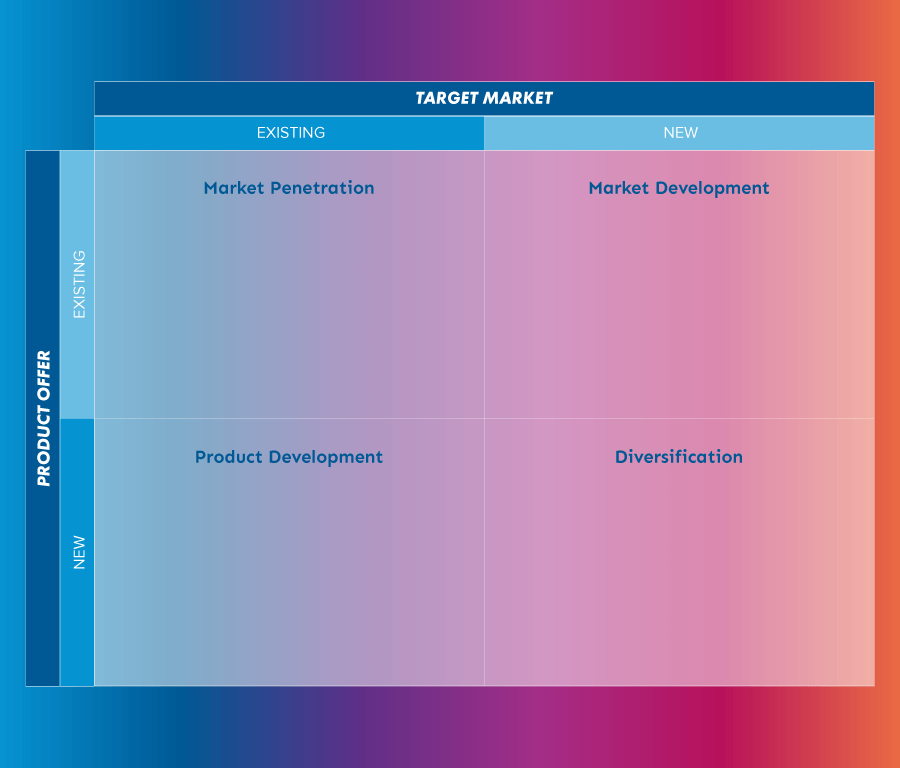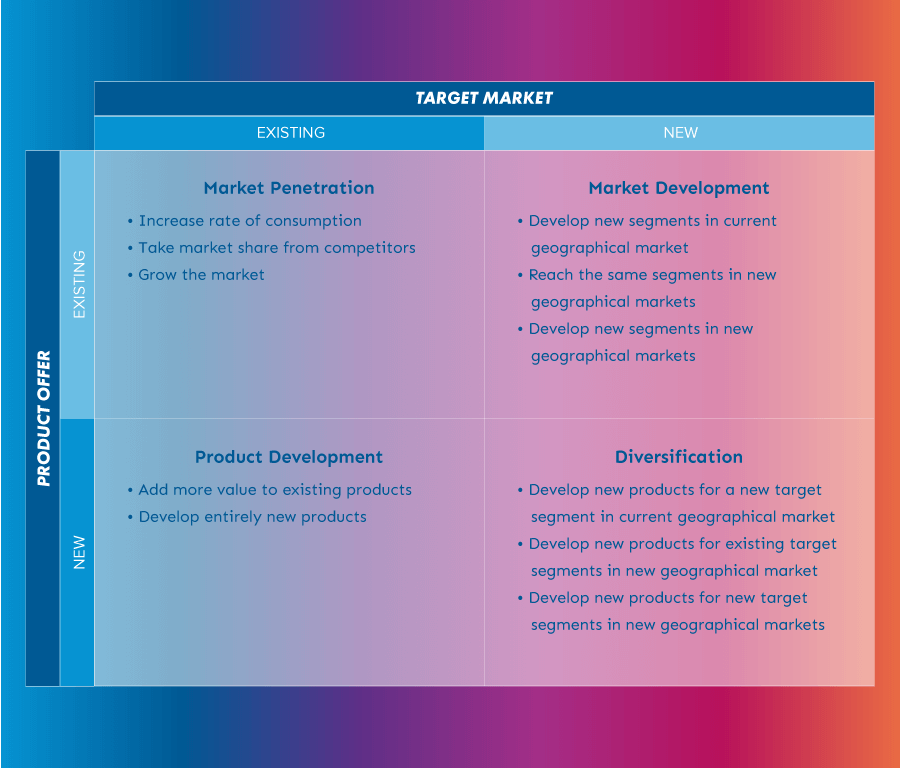Growth Strategy 2.0: Ansoff goes Digital

The Russian Igor Ansoff was one of the most brilliant economists of the 20th century. He became especially known for his growth matrix, which divides the growth strategy of a company in four quadrants. He is seen as the founder of strategic marketing.
More than 60 years later, STRAREX examines whether Ansoff’s theory still holds up in this digital age.
Igor Ansoff, the champion in the analysis of your growth strategy.
In marketing circles, this man needs little introduction, but here we are going to introduce him to you. We start from December 12, 1918, a cold winter’s day in the Russian Vladivostok. While father Ansoff skittles an extra block of wood in the stove for fun, mother Ansoff gives birth to their son Igor.
During his youth it becomes clear that Igor is a great genius. He juggles upside down with abacus windows and has a natural talent for all things mathematical. This is what he later turns into his profession. As professor of economics and mathematics at various universities, including some in the United States, he lays the foundation of strategic management with his growth matrix.
Ansoff’s growth matrix
In his theory, Ansoff identifies only 2 variables: your product and your target market. This gives a matrix with 4 quadrants: 4 main strategies you can use to grow your organization:
- Market penetration: Sell more of your current product to your current market
- Product development: Sell a new product to your current market
- Market development: Sell your current product to a new market
- Diversification: Sell a new product to a new market

Market penetration – Mobile vikings
With the advent of Mobile Vikings, there were already many incumbent telephone service providers on the market. The big question: As a small player, how do you conquer a place in an already saturated market?
- Mobile Vikings profiled itself as the price breaker par excellence by offering customers more call minutes and data than the competition, at a more competitive price.
- Users were encouraged to invite their friends to become customers. When a friend becomes a customer, the referring user gets 1 month for free.
- To top it all off, they launched the Viking Deals: Mobile vikings customers get a percentage of their purchases back in call credit at more than a hundred webshops (including Lidl, Coolblue and Decathlon,…). This allows them to save up to 100% on their final phone bill.
Product development – Telenet
In their early years, Telenet was able to snatch a large part of the Belgian Internet market from then monopolist Belgacom. In order to grow further, Telenet decided to expand their product range from broadband cable internet to television and mobile subscriptions. Customers who already had Internet access from Telenet were won over with competitively priced packages that bundled the three services.
At a later stage, Telenet was among the first to offer second-screen viewing: Customers can also watch via the Yelo app: wherever there is internet, TV can be watched.
Market development – Wiko
The age of the average GSM user was between 12 and 65 years at the beginning of the 2000s. Older or younger users were rather exceptions. Enter Wiko: Founded in 2011, the smartphone producer mainly brought low-priced phones on the market, (perfect to give to your child). The Wiko phones were also equipped with a few unique features such as:
- An ICE button ( In Case of Emergency), which automatically notifies a contact in case of an emergency
- And a simplified interface that was easy to use for both kids and seniors
Diversification – Philips
From small lamp manufacturer to supplier of pretty much everything tech, Philips is a textbook example of diversification. The company systematically expands its activities into new sectors.
- televisions
- video footage
- sound installations
- portable multimedia
- shavers
- electric toothbrushes
- hairdryers
- pharmaceuticals
- CT scanners for hospitals
Although it seems obvious to define the right growth strategy, throughout the last century this was a luxury previously reserved for larger players. This is mainly due to the high entry costs involved in implementing a growth strategy. Moreover, there was little insight into the possible results of a campaign, and it was always a guess as to the return on investment. The smaller players usually could not afford that risk, which meant that larger companies had a marketing advantage. Until digitization came into play…
Digitization: Flattening the playing field
A traditional growth strategy includes all non-digital efforts that a company makes to increase its turnover. Think, for example, of advertising in newspapers, magazines and weeklies, or on television or radio.

Traditional growth strategies have gone through their most successful period. Their high cost, limited measurable ROI and the changing marketing landscape have a major impact on their current efficiency.
A digital growth strategy has a step ahead on every front. We list here some benefits for you.
- During the development of your digital strategy, we can measure exactly what the effect of a campaign is at any time.
- So-called “spill-over benefits” arise. A growth strategy is one whole, but the components do influence each other. If product A performs well, there is a good chance that product B and C will also get a boost from this. This is also the case with Ansoff’s growth matrix.
The essence of marketing continues to reach as many (new) customers as possible. Innovative forms of marketing have blurred the boundaries that once prevented small and medium-sized companies from implementing growth strategies.
So what’s the answer? Here’s our conclusion: Ansoff’s theory still holds up in this digital age. However, the impact and way of implementation has changed significantly. More than ever, there is a mass of data available and high-tech marketing tools that also allow smaller players to develop a marketing plan, implement it in a structural way & adjust the strategy based on clear KPIs.